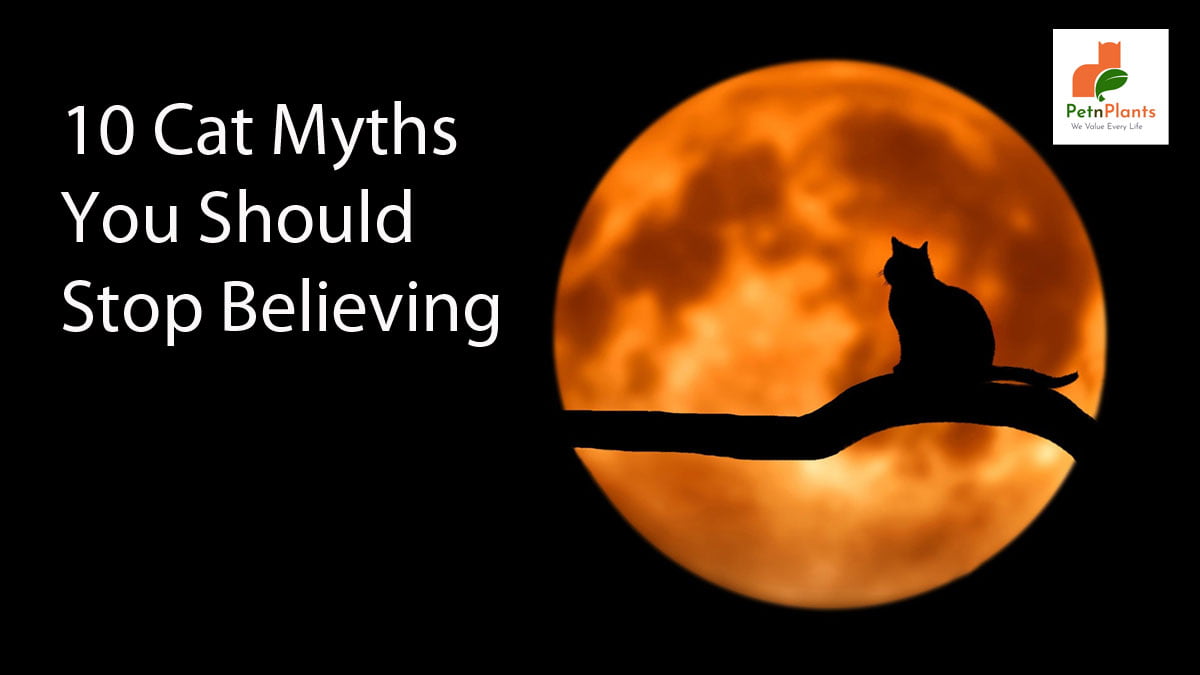How To
Latest
Pet Care
How to Groom Your Dog at Home with the Right Dog Grooming KitMarch 19, 2025
We Value Every Life

Cats bring about much curiosity and admiration and are favored pets. They are known for their instinctive behaviors. Thus, they have become a leading example of many myths or superstitions.
However, many false claims are associated with them without any scientific rationale. Here we will look at ten cat myths or false claims that one should stop believing.

There have been black cat myths about how black cats have been associated with witchcraft and how they are cursed cats. Statements such as black cats bringing bad luck were commonly known but without evidence. This led to black cats getting shunned and rarely adopted as pets due to their negative beliefs.
Several arguments prove that associating bad luck with black cats is a myth. As a principle, color has nothing to do with luck. A cat inherits its color from its genetics, and therefore the colors are not related to good or bad luck. The best way to counter this myth is to adopt a black cat.
Cats having nine lives is a well-known statement made throughout the world.
This legend has probably to do with the fact that cats have the ability and agility to avoid accidents.
The truth is that cats have only one life like all other animals. On the contrary, they are delicate creatures who need special care for hygiene, food, and health care.
The image of a cat drinking from a saucer persists. There is a firm belief that cats love milk, and it is their main diet. Animals drink breast milk, which is most suitable for puppies and kittens. However, as cats grow to acquire a taste for other foods, notably non-vegetarian protein foods when they reach the weaning period, they stop consuming their mother’s milk and start feeding on other foods.
Many cats, especially males, develop an allergy to lactose and suffer from gastrointestinal problems. That all cats love milk is one of the most common cat myths. For cat owners, it is better to feed them with commercial feed that has nutritional value.
Cats can fall on their feet from a height, just like anyone else. However, it is not a rule. Cats have flexible skeletons, which make them cushion their fall. They have excellent mobile, and flexible bodies that help them withstand falls better than others. Falling on feet without hurting oneself depends on which eight the cat has fallen from. Often, when falling from a greater height, the cat gives itself the chance to turn its body before hitting the ground due to its instinctive reflex. There are many instances when one finds cats falling and getting injured or even dying. This busts the myth of such a claim.
This is a stupid myth that forces many pet owners, especially women who keep cats as pets, to abandon them when they are pregnant. This scare originated from claims about the supposed risks of transmission of Toxoplasmosis, caused by a parasite that comes from contamination caused by contact with cats’ feces.
The fact is that Toxoplasmosis is rarely found in domestic cats who consume commercial food and are medically treated with preventive medicine. So, logically speaking, a cat, not a carrier, is of no risk to pregnant women.
There is no such thing called betrayal in a cat’s nature or behavior. Cats have a more independent character than other animals, and they are known to stay in solitude. This does not mean that cats do not care about their owners. There is a particular behavioral characteristic that comes naturally to cats. It is seen that cats’ behaviors undergo changes when they get domesticated and get more proximity to their owners. People tend to have this selfish notion of cats simply because they compare them to dogs as pets. Dogs are more affectionate, showing their openness to their owners, which is not the case with cats. Since both are different animals, they have other characteristics. They being feline creatures, avoid exposing themselves to humans.

There is no scientific evidence to suggest that cats and dogs do not get along. Like any other animals, they can vary from others. Also, proper grooming and coalition of pet cats and dogs can change their behavior. Even when cats and dogs grow up in the same house, they get along well. This is another myth that has come down for ages that need to be discarded.
It is a myth that says cats can educate themselves. Cats have intuitive skills and natural behavioral characteristics, allowing them to adapt to various situations. However, they do not translate to self-education! However, it is possible to train cats and is highly recommended for pet owners. Proper training will make the cat adapt to their owners and homes and prevent them from developing aggressive behavior or escaping.
While human eyes have color receptor cells of 3 types – blue, red, and green which help them distinguish different numbers of colors and color tones, cats do not have the red cone cells, so they cannot distinguish between red and pink shades. They also have difficulty seeing the saturation and intensity of colors through they can see and distinguish shades of green, blue, and yellow. So, it is wrong to say that cats can only see in black and white colors.

This is a widespread myth that cats require less care than dogs without substantiation. This assumption is dangerous and insensitive as cats require hygiene, proper food, vaccination, and physical activity as much as dogs.
There are many more cat myths than the ten listed above, and this is surprising as cats are the common domestic pets. It is essential to clear cat myths and misconceptions for cat owners as it will help them keep their pets safe and healthy.
0